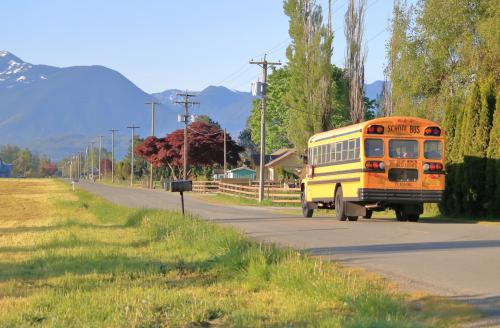The Biden administration has made no secret about its intention to focus on investing in the nation’s youth. With its allies in Congress, the White House’s “American Rescue Plan” proposes to provide thousands of dollars of cash payments to families with children. This, alongside increased attention to education, caregiving, and other family support measures, signals the administration’s spotlight on the well-being of children. Although investment in the nation’s youth is a long-held staple of American politics, it was clearly not an emphasis of the Trump administration, which paid more attention to appeasing its largely older political base.
Yet, politics alone is not the issue. There is an important demographic rationale for investing in young people, from infants to teens. It has to do with the unprecedented aging of the nation’s population and the increased reliance of our rapidly growing senior population on a young population whose size will remain relatively stagnant. On top of this, demographic gains among today and tomorrow’s younger populations will be driven by children of color—many of whom continue to grow up in families experiencing high levels of poverty.
This means that the pipeline of future workers in our rapidly aging nation is growing modestly at best, and is made up of children among whom racial and ethnic inequality is amplified. For these reasons, the nation’s demography alone makes it imperative that the needs of children and young families are high on the policy priority list.
Young people’s share of the U.S. population continues to shrink
Today’s baby boomers grew up at a time when children were plentiful. It was a prosperous economic period in postwar America, when “traditional families” were the norm. But since then, a variety of economic and societal circumstances has led to lower birth rates, including increased educational opportunities and labor force participation for women, delays in the age of marriage and childbearing, and a general aging of the population as baby boomers themselves age beyond childbearing years. More importantly, children (persons under age 18) are comprising ever decreasing shares of the U.S. population—from 35.7% in 1960 to 22.1% last year, and a projected 20.6% in 2040.

This means that children will be a demographically smaller part of the population while the overall population ages. As the large baby boomer generation advances beyond their primary labor force years, both the child and labor-force-age population will grow only modestly. In fact, the 2020 census is likely to show a small absolute decline in the child population over the 2010-to-2020 decade. And if immigration remains at the low levels of the past two years, there could be close to negative growth in both the child and labor-force-age population in the decade ahead.

In contrast, the ranks of the senior population will swell, as baby boomers continue to advance beyond age 65. As a group, seniors increased by about two-fifths in the 2010-to-2020 decade, and are projected to grow another 30% during the 2020s.
The national youth deficit is amplified in large parts of the country. Between 2010 and 2019, 30 states registered absolute declines in their child populations. Twenty-three states showed declines in their working-age populations. And in all 50 states as well as Washington, D.C., the senior population grew by rates ranging from 22% (in Iowa) to 67% (Alaska) (Download Table A).
…
Map 1: Child population growth, 2010-2019
…
Source: William H. Frey analysis of U.S. Census Bureau population estimates
Note: Percent 2010-2019 growth of persons under age 18
In the decades to come, children will be a far rarer demographic commodity than they were in the nation’s past. This is why they need to be nurtured. Not only are they America’s future, but the youth will become an important asset to our future labor force, which will be tasked with supporting an increasingly large retiree population.
People of color will dominate America’s child population growth
The stagnation of the country’s child population would be even more dire were it not for the contributions of children of color. Because immigrants and their U.S.-born children, together, are younger than the rest of the population, recent decades’ immigration from Latin America, Asia, and elsewhere served to bolster the size of the nation’s child population. This is evident in the contributions of different race-ethnic groups over the 2010-to-2019 period, which showed that Latino or Hispanic Americans, Asian Americans, and children identifying as two or more races contributed to all of the country’s child population gains.

Were it not for these groups, the last decade’s decline in the child population would have been substantial. The white child population (those who do not identify as a member of other racial or ethnic groups) has been declining since 2000 due to the more advanced aging of whites and a proportionately smaller share of white women in their childbearing ages. This population is projected to decline for decades to come. Similarly, there were more modest declines in the number of Black children as well as those who identify as Native Americans. Thus, Latino or Hispanic Americans, Asian Americans, and people identifying as two or more races are the groups primarily responsible for stemming further child population declines.
This racial-ethnic dynamic occurred in most states. Forty-four states showed 2010-to-2019 declines in their white child populations (Download Table B). However, in 15 of those states—including Texas and Florida, the states with the largest numeric child gains—white child declines were more than countered by gains in children of color. Only six states (led by Utah) and Washington, D.C. registered 2010-to-2019 increases in their white child populations; but in all but one (Hawaii) those gains were smaller than gains for other race and ethnic groups combined.

Map 2: Children of color as percent of total child population, 2019
…
Source: William H. Frey analysis of U.S. Census Bureau population estimates
Note: Shows percent of persons under age 18 who identified as Latino or Hispanic, Black, Asian American, Native American, two or more races, and other nonwhite racial groups.
Because of these contributions, the 2020 census is likely to show that children of color will comprise more than half of the nation’s total child population, with Latino and Hispanic children comprising 25.5% and Black children comprising 13.8%. Moreover, as younger, diverse generations age (and due to some projected immigration), more than half of the projected young labor-force-age population (ages 18 to 34) in 2030 will be people of color. This stands in contrast to the 35-and-older population, where white Americans are projected to comprise a substantial majority (62%).
The racial diversity of the nation’s child population is well established nationally and expanding across the country. In 2019, children of color constituted more than half of the child population in 15 states and more than two-fifths of the child population in an additional 11. In several southern states ranging from Louisiana to Virginia, Black children make up the largest nonwhite share; however, in a number of states in the West (California, Arizona, New Mexico, and Nevada) and South (Texas and Florida) Latino or Hispanic children are highly represented. (Download Table C)
The rise of children of color is a key element of the changing demographics of America’s child population. They have not only stemmed a sharp decline in this population but, as they age, will be driving most of the growth in the nation’s labor force.
The importance of closing race-ethnic disparities within the child population
Demographic trends and projections make clear that the child population will continue to grow slowly and become even more racially and ethnically diverse. Already, nearly two-fifths of children nationally are Black and brown.
For this reason, it is necessary to both recognize and act to close the persistent economic disparities that exist between race and ethnic groups within the child population. Recent American Community Survey data makes this plain with respect to child poverty.

The data shows, first, that poverty levels for children remain higher than those for older age groups: 17% for children compared to 11% and 9% for the working-age and senior populations, respectively. Second, there is a sharp economic divide by race and ethnicity within the child population. Noteworthy are the high poverty levels of the two largest nonwhite groups: 31% for Black children and 23% for Latino or Hispanic children. This stands in contrast with the 10% poverty level for white and Asian American children.
While it is true that the pre-pandemic child poverty rates of 2019 were lower than earlier in this decade and previous decades, these racial and ethnic disparities are still substantial, and are especially concerning in light of the growing diversity of the child population. They are likely to become far more severe as a result of widening racial inequalities due to COVID-19.
These child poverty disparities represent the “starting point” of a trajectory of racial and ethnic inequalities that have been evident among young adults in recent generations with respect to educational attainment, homeownership, wealth accumulation, and other measures. They also reflect the current family context of these young people with respect to receiving adequate nutrition, health care, and social services.
While child poverty levels tend to be highest in states with stagnant child populations, poverty levels are also above average in Texas and Florida—states where the child population grew the most (by 534,000 and 278,000, respectively, from 2010 to 2019). In both states, Latino or Hispanic populations accounted for most of child growth (Download Table D).
Demography, destiny, and investing in children
Although the phrase “demography is destiny” is often dismissed as an overly simplistic view of the future, it is an apt one in making the case for more investment in the nation’s children. The U.S. is at the cusp of significant age and generational change. Its child population, growing at historically low levels, will be feeding into a modestly growing labor force that will need to support the Social Security and Medicare needs of a rapidly growing senior population as well as the nation’s ongoing productivity. Moreover, the major engine of this modest growth of the young is a new generation of children born into families of color—the largest groups of whom stand on the wrong side of rising racial and ethnic inequalities.
There is no bad time to invest in children. The heyday of such government investment occurred during the immediate post-World War II period, when the economy was flush and childbearing was on the rise. Now we are in the opposite situation—staring at a down economy, sluggish growth of youth, and a dire need to address child inequality and poverty, both of which could rise in the year ahead. It did not help that the Trump administration avoided investments in child-centered programs, be they education, health care, or other family supports. Nor did it make efforts to reduce racial inequalities on any of those fronts.
Perhaps just in the nick of time, we have a new administration that understands the urgency of policies that benefit children, including the direct cash benefits proposed in the American Rescue Plan or other initiatives to support child nutrition, public education, and family caregiving. These efforts—as well as a renewed call to reduce racial and ethnic inequalities—suggest that the Biden administration understands the importance of investment in children. These policies could help ensure that today’s children and tomorrow’s working-age citizens have the opportunity to advance a growing middle class, raise healthy families, and contribute to older generations’ and the nation’s future well-being.
The Brookings Institution is committed to quality, independence, and impact.
We are supported by a diverse array of funders. In line with our values and policies, each Brookings publication represents the sole views of its author(s).



